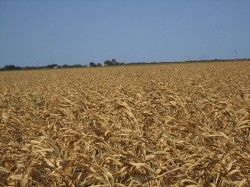Disasters / Food / Food Shortage / Government
The Corn Is Dying All Over America
Since 75% of grocery store products use corn as a key ingredient, expect food prices to skyrocket. Corn is also a staple in many fast foods. Corn is in ethanol and the main food source or chickens. In addition to this, maize is in many things that aren’t obvious like adhesives, aluminum, aspirin, clothing

